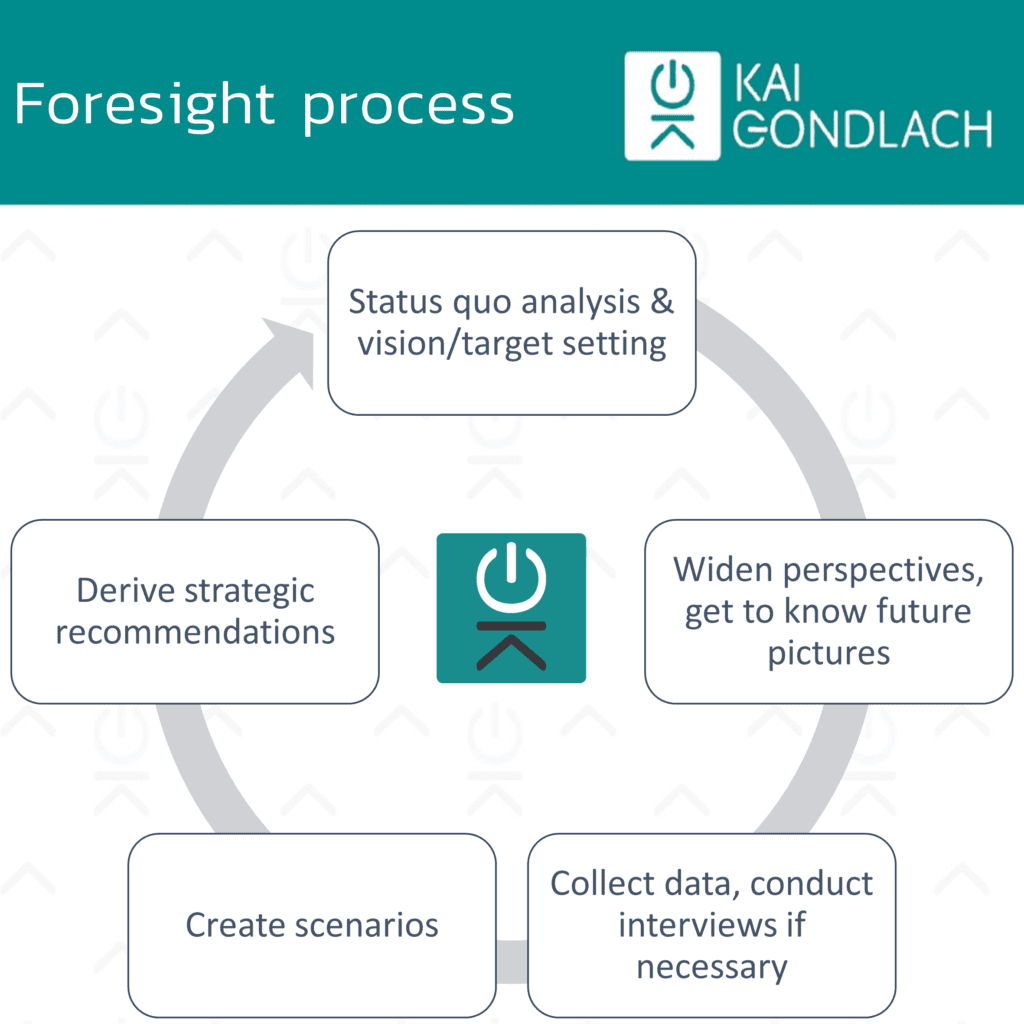Foresight process
Foresight as basis for strategic planning
Foresight processes are as unique as their addressees. Over the last decades, however, experience and the scientific community have produced some guidelines for successful foresight processes.
You will find detailed information about the theoretical basis of my work on the page “Methods of Futures Studies”. This is the right place if you are interested in the exemplary sequence of a foresight process.
If you don’t know where you are and where you want to go, it’s better not to run at all. If you are standing in a dark room, you don’t run blindly for luck. However, many organizations do exactly that. The past has shown that this principle has few chances of success.
At the beginning of every foresight process is the analysis of the status quo. Interestingly, even the members of the management or board of directors often do not have a uniform picture of their business model. Do we sell cars or offer mobility? Do we sell insurance policies or do we take away people’s fear of external dangers?
Then it’s about the vision of the organization and the goal of the process. Where will we be in ten years’ time when everything is going really well? And where should this foresight process take us?
A symptom of our specialist world is the limited view on many topics. But the most important element for successful strategic foresight is a broad perspective! Therefore, you and your employees get to know the most important future pictures, trends and technologies, in short: probable futures. With this knowledge in mind, it becomes easier to assess future developments more realistically. That’s a promise!
A foresight process is only as good as the data on which it is based. Therefore, the focus of applied foresight is on the systematic collection of quantitative and qualitative data. This includes trend radars, megatrends, driver and technology analyses and patent databases. In many processes, interviews with experts are an advisable instrument to avoid blind spots and to obtain assessments of the time horizon of certain developments.
The applied scenario technology from the scientific futurology is more complex than many think. In a multi-stage procedure, the findings of the entire process are systematically recorded and processed, interactions are determined, consistencies of coexisting factors are anticipated and finally the raw scenarios are discussed. This process step alone usually takes several months and can only be carried out with the help of software in order to be able to cope with the complexity of reality.
Finally, strategic options are derived from the scenarios. How well is your organization prepared for the scenarios? Which strategic options for action are you missing, which ones are superfluous, which new business areas will arise in the future? To this end, we conduct a Scenario Readiness Assessment and work out the most important development paths with experienced strategy consultants.
Need help in your Foresight process?
Request our availabilities now:
Process Consulting | Foresight Process | Operational Research

